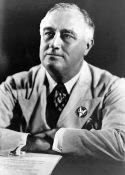
Richard A. Ruth,
In Buddha's Company: Thai Soldiers in the Vietnam War (Honolulu, Hawaii:
University of Hawaii Press, 2010).
from the publisher:
“From 1965 to 1972 Thailand sent nearly 38,000 military personnel to fight in the Vietnam War. Based on interviews with rank and file volunteers, who saw themselves as Buddhist warriors, this book is the first serious study of Thailand’s involvement in the war. Richard Ruth challenges the stereotypes and lazy generalizations about this forgotten episode of the war, and he offers fresh and compelling arguments to explain how this episode has contributed to the militarism in Thailand’s modern history.” —Craig J. Reynolds, Australian National University “The Vietnam War has generated a vast literature, but Richard Ruth has succeeded in producing a wholly original study of interest both to military historians and Southeast Asia specialists. Ruth displays a deep understanding of and sensitivity toward Thai culture and reveals much about how the Thai soldiers—most of them from poor families in upcountry areas—viewed and interacted with the Americans who trained and sponsored them, the rural residents of South Vietnam, and the Viet Cong enemy. His work sheds new light on Thailand’s involvement in the Vietnam War and on non-elite Thai culture in the mid-twentieth century.” —E. Bruce Reynolds, San Jose State University
“Breaking with the standard American-centric portrayal of Thai soldiers as Washington’s ‘mercenaries’ in the Vietnam War, Ruth provides Thailand and Thai combatants with agency. What makes this study particularly original is Ruth’s account of how that agency manifested itself ‘down below’ in South Vietnam—and back in Thailand.” —Christopher Goscha, Université du Québec à Montréal
In Buddha’s Company explores a previously neglected aspect of the Vietnam War: the experiences of the Thai troops who served there and the attitudes and beliefs that motivated them to volunteer. Thailand sent nearly 40,000 volunteer soldiers to South Vietnam to serve alongside the Free World Forces in the conflict, but unlike the other foreign participants, the Thais came armed with historical and cultural knowledge of the region. Blending the methodologies of cultural and military history, Richard Ruth examines the individual experiences of Thai volunteers in their wartime encounters with American allies, South Vietnamese civilians, and Viet Cong enemies. Ruth shows how the Thais were transformed by living amongst the modern goods and war machinery of the Americans and by traversing the jungles and plantations haunted by indigenous spirits. At the same time, Ruth argues, Thailand’s ruling institutions used the image of volunteers to advance their respective agendas, especially those related to anticommunist authoritarianism.
Drawing on numerous interviews with Thai veterans and archival material from Thailand and the United States, Ruth focuses on the cultural exchanges that occurred between Thai troops and their allies and enemies, presenting a Southeast Asian view of a conflict that has traditionally been studied as a Cold War event dominated by an American political agenda. The resulting study considers such diverse topics as comparative Buddhisms, alternative modernities, consumerism, celebrity, official memories vs. personal recollections, and the value of local knowledge in foreign wars. The war’s effects within Thailand itself are closely considered, demonstrating that the war against communism in Vietnam, as articulated by Thai leaders, was a popular cause among nearly all segments of the population. Furthermore, Ruth challenges previous assertions that Thailand’s forces were merely “America’s mercenaries” by presenting the multiple, overlapping motivations for volunteering offered by the soldiers themselves.
In Buddha’s Company makes clear that many Thais sought direct involvement in the Vietnam War and that their participation had profound and lasting effects on the country’s political and military institutions, royal affairs, popular culture, and international relations. As one of only a handful of academic histories of Thailand in the 1960s, it provides a crucial link between the keystone studies of the Phibun-Sarit years (1946–1963) and those examining the turbulent 1970s.






























